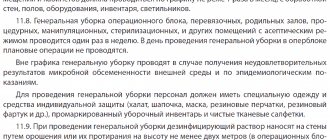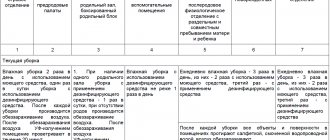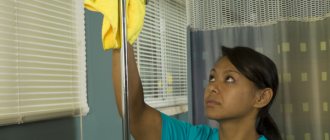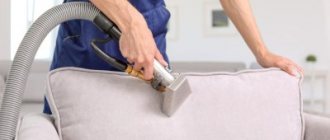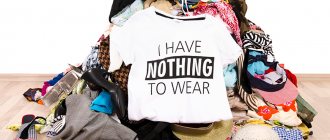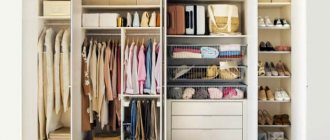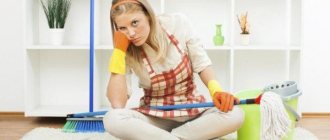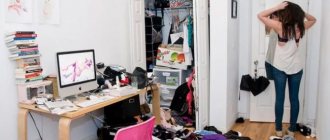Routine cleaning is a regular event aimed at maintaining order and cleanliness in residential and special premises. The frequency of its implementation depends on the purpose of the room, the degree of contamination and the sanitary requirements. In apartments and houses it is carried out at least twice a week, in medical institutions at least once a day, and in special ones - repeatedly during the day. The order in which current cleaning is carried out, and how it differs from general tidying up, is explained in the following text.
General definition
Routine cleaning of wards, routine cleaning of the office and other premises is one of the items on the list of measures and sanitary measures carried out for anti-epidemic purposes. First of all, routine cleaning of the ward and routine cleaning of other areas is aimed at preventing infection that may spread within the hospital.
The schedule and frequency with which routine cleaning of offices is done may vary - in addition to the two mandatory ones, additional cleaning and disinfection must be done between operations. In all cases when scheduled routine cleaning of premises is carried out, the following types of work must be completed:
- Cleaning from various passive contaminants. Dirt, dust, and other surface contaminants.
- Disposal of biological waste, especially carefully if routine cleaning of the operating room is carried out.
- Use of disinfectants. This is done without fail if all premises are being routinely cleaned; for operating rooms and wards, additional disinfection can be carried out in several stages.
Routine cleaning of hospital wards has the main goal of destroying microorganisms that can multiply on various surfaces and be the causative agents of various diseases, including serious ones.
Cleaning in the absence of guests
Cleaning up the rooms is the responsibility of the maids. A prerequisite for cleaning is usually the immediate absence of guests in the room. Those hotel visitors who stay in the room for a long time and do not leave it should separately agree on the cleaning time.
When guests do not wish to be disturbed, they can use a "do not disturb" sign. In this case, the maid should under no circumstances disturb the guests. If there is no such sign, then a hotel employee can knock on the door and ask about the possibility of cleaning.
Algorithm for current cleaning
Routine cleaning of premises is carried out at least 2 times a day, including cleaning and disinfection of floor surfaces, window sills, doors, furniture, and all equipment. Operating rooms undergo additional routine cleaning between surgeries. The use of only certified and safe cleaning and disinfectants is permitted.
When carrying out routine cleaning of premises, you must follow the principle:
- The first cleaning is done using detergents to thoroughly clean the surfaces from dirt and dust. The consumption rate of detergent additives is 50 grams per standard ten-liter bucket of water.
- The second cleaning includes the use of disinfectants. The concentration and composition are approved by the regulatory documents in force for the hospital.
Carrying out routine cleaning includes the following steps:
- Surface cleaning. To do this, you need to wipe all window sills, headboards, tables, other furniture and surfaces with a damp cloth or rag.
- A cleaning procedure is carried out in canteens or food centers for patients. After feeding, the distributor must wipe all tables, bedside tables and other surfaces.
- After cleaning the furniture and window sills, the floor is washed. In this case, the addition of a disinfectant solution is used.
- If necessary, additional quartzing is performed. This procedure is mandatory for routine cleaning of operating rooms.
- The final stage includes ventilation.
The used cloth used to wipe the surfaces is disinfected. To do this, the composition of the disinfectant solution is diluted in accordance with the approved hospital standards. After disinfection, the fabric or rags are rinsed or washed with running water until the smell of the disinfectant disappears. After this it is dried.
Stages of room cleaning
The duties of a maid include:
- ventilation;
- changing bed linen and making the bed;
- wiping furniture from dust, mirrors from dirt, cleaning cobwebs (if any);
- caring for flowers and other plants;
- putting things in order in the bathroom and toilet.
Cleaning is usually done clockwise, gradually putting dirty dishes, garbage and other unnecessary things that need to be replaced into a special cart.
In large rooms, cleaning starts from the bedroom, followed by the living room and other rooms. The restroom and bathroom are always put in last place.
Registration logs for current cleaning
The log of current cleanings includes an approved schedule for their implementation. After cleaning, a recording is made. The log indicates the planned date and time, actual data, who carried out the cleaning, what detergent was used, the disinfectant solution, its quantity and concentration. This must be followed by the name of the person who controlled the process and effectiveness. Paintings are put up of those who did and supervised the cleaning.
A regulatory document is drawn up separately, which indicates the number of cleanings for each specific type of room and lists individual rooms for which there is a personal schedule.
Room cleaning sequence
Room cleaning technology today has been stripped down to the smallest detail. This process has its own sequence, each stage has its own time intervals. They must be strictly observed.
All rooms are cleaned in the following order:
- Booked.
- Released.
- Busy.
Guests may request emergency (or interim) cleaning. This service is most often paid for separately, and is usually carried out in the afternoon.
Replenishment of consumables
Replenishment of consumables, obviously, is carried out not only after guests leave the room, but also throughout their stay. Every day, while cleaning the room, the maid checks to see if the supply of hygiene products needs to be replenished. Depending on the hotel's policy, stocks may be replenished:
- toilet paper;
- dry wipes;
- paper towels;
- soap;
- shampoo;
- other cosmetics.
The frequency of replenishment depends on the hotel policy or its star rating. The stock is also replenished at the guest's request. For example, if the soap in his room runs out before it is scheduled to be replenished, he can ask the maid or receptionist to refill the dispenser ahead of schedule.
Features of preparing cleaning solutions
Features of the preparation of solutions
Disinfectant solutions are prepared in accordance with the concentration prescribed by the documentation according to the legislative regime. This ensures the death of bacterial microflora. There is a whole table of how cleaning measures should be carried out in the wards and the time of implementation. It also indicates which cleaning solutions must be used. So, linens and dishes of patients who have AIDS should be treated with chloramine for 120 minutes.
Bathrooms for such patients should be treated with lysoformin. Bedpans with urinals, heating pads, oilcloths, aprons, couches should be immersed in a solution of chloramine, disinfectant, neochlor, lysoformin and hydrogen peroxide for an hour. In addition, wiping should be carried out twice during the current disinfection, which should be carried out with chloraman, peroxide and lysoformin for an hour.
It is important to note that the use of specific products is determined by the stationary profile and microbial type of contamination of objects. Spot deep cleaning occurs when a patient or department has an infection. The purpose of such a procedure is to stop its spread to other departments. In this case, the skin of everyone present in the building is completely or partially treated, and disinfestation and deratization are carried out. During disinfection, surfaces, bedding, linen of the infected person, and the transport on which it was transported are disinfected. If possible, he is isolated as much as possible from other patients and placed under quarantine.
Note! It is worth pointing out that all procedures in the room for therapy, operations, dressings, and intensive manipulations are carried out using disinfectant compounds that have a wide antimicrobial spectrum and can destroy all types of bacteria, viruses and fungi.
Personnel training
There is a hierarchy in the housekeeping department, which is responsible for cleaning. At the very first level there are maids, then there are supervisors, and after them there is the head of the department, Nadezhda.
Before a new maid starts work, she must undergo training - theoretical and practical. Training takes place in small groups under the guidance of a supervisor, who brings the maids into the room and himself cleans in the correct order. Next, the maids try to clean it themselves.
The duration of training for maids depends on the availability of work experience and its duration. As stated in hotel standards, a maid can undergo re-training with a supervisor if she feels insecure.
Despite the length of service and experience, each maid has in her cart this diagram, which prescribes the correct plan of action.
“Each hotel complex has its own cleaning standards. Thanks to our standards, which I described, the cleanliness level for the past year is 88%,” which means that 88% of guests noted in their reviews that their room was perfectly clean.
Cleaning standards for a maid, or One day in the life of an invisible perfectionist
Beginning of work
Maid Alla Ivanovna arrives at the hotel 15 minutes before the start of her work shift.
This allows her to slowly prepare for work: change clothes, drink a cup of coffee, and, if necessary, improve her appearance. Alla believes that cleanliness does not start with the first room in her work schedule - it starts with her and with every hotel employee. That is why even the office premises are perfectly cleaned and harmonious: personal towels are neatly folded on personalized shelves, coffee cups are washed until squeaky and wiped dry, handbags and clothes are neatly hung on hooks in the appropriate lockers.
She leaves her mobile phone in the same locker. Before starting work, she will be given an internal telephone number to contact the hotel reception.
Alla Ivanovna
Appearance
Alla always looks neat.
- Clean hair is collected in a neat hairstyle. Hair color is a pleasant chestnut: Alla believes that bright shades - red, eggplant, yellow - are dissonant with her work image, and a hotel employee can only take such liberties outside the hotel, for example, on vacation.
- Manicure in nude shades or with clear varnish.
- Makeup is light, daytime.
- The uniform fits perfectly, as it is tailored to individual measurements: it does not restrict movement, does not interfere with work, and is non-staining.
- Low-top shoes, neutral beige color. The sole is durable, but does not create extraneous sounds (knocking, stomping) when walking.
- Alla does not wear perfume or jewelry at work.
- Her name badge is always attached to her uniform. The text on the badge is clearly visible and easy to read.
Behavior in public areas
When designing hotels, Ribas Hotels Group takes into account the operating features of hotel real estate. In particular, hotels are built in such a way that staff and guests meet in common areas as little as possible: they use different entrances and exits, elevators and stairs.
However, this does not exclude their chance encounters while cleaning rooms or common areas. Therefore, when meeting a guest, any conversations are prohibited. If the guest addresses himself, Alla answers briefly and politely, in no case using evaluative expressions like: “I think this is terrible...”, “I really like...” and so on. If the maid cannot answer a question or fulfill a request, she will definitely direct the guest to the reception, where his request will be satisfied.
There were exceptions: for example, once a guest, having specified the necessary information, suddenly asked what interesting things could be seen in the city. Alla Ivanovna then recommended him several performances that were successful in the theater located a couple of blocks from the hotel, and an organ concert at the Philharmonic. The guest thanked her and was completely satisfied with her answer. According to the company culture, the maid did the right thing. The main message of the Ribas Hotels Group chain is that guests in the hotel feel like they are visiting a good friend who will help at the right time.
This is also smart from a business point of view. After all, when the line staff is able to not only clean the room efficiently according to the checklist, but also provide super service (in this case in the form of a recommendation), this is a great merit to the entire hotel team.
Returning to the issue of cleaning standards: employees are strictly prohibited from talking to each other in transit areas and office areas. The company is very strict about this, so when meeting in the corridors, lobby or on the terraces, the maids exchange smiles, but do not start a conversation. They know that guests are always staying at the hotel and it is unacceptable for them to observe personal interactions between staff.
Pre-preparation
Before starting work, Alla Ivanovna receives the keys to the rooms she must clean.
There are three types of room cleaning: daily, after departure of guests and general. Rooms are cleaned in the following order: first those that are booked, then those that are vacant, and lastly those that are occupied.
The maid is given the required number of sets of bed linen, cosmetics for furnishing the rooms and cleaning equipment. She puts all this in a cart.
Maid trolley contents:
- There are two garbage bags attached to the sides of the cart It is desirable that they differ in color. Dirty linen and terry are placed in one, and garbage from the rooms in the other;
- in the lower compartment - cleaning and detergents and other necessary materials for cleaning rooms;
- the middle compartment is for clean bathrobes, towels, slippers and bed linen. It should be noted that Alla never moves the bedding set open. She always packs it in a thick fabric bag and delivers it to the room;
- In the upper compartment of the cart , as a rule, they put the “Guest Folders” stationery, cosmetics, and bottled water.
Room cleaning standard
As a rule, the room is cleaned in the absence of the guest. If the room is occupied and there is no guest in it, 15 to 20 minutes are allocated for cleaning. Cleaning a vacant room takes from 20 to 30 minutes, depending on the number of rooms, technical equipment, and the presence of a balcony or loggia.
If there is a “Do Not Disturb” sign on the door, Alla will never knock on the door: this is strictly prohibited.
In apartments with a sign on the door “Please clean up”, they clean up first. If there is no sign on the door, the maid knocks on the door and clearly says: “Room cleaning.” If there is no answer, she repeats these steps two more times, and only after that opens the door with the service key.
She installs her cart so as to completely block the passage to the room: a stranger will not be able to easily enter the open door. If there is really no one in the room, the maid starts cleaning according to the instructions.
- Alla opens the window for ventilation. Ventilation should be maintained throughout the cleaning process.
- Turns on all lights in the room. This way she checks their serviceability and better sees dust in hard-to-reach places.
- Takes out trash from bins in all rooms of the room (if there are several of them) and the bathroom.
- Washes saucers, cups, and trays that are included in the room package. Removes dishes if breakfast/lunch/dinner was ordered in the room.
- Changes bed linen. Removes and turns over the mattress cover, fluffs the pillows.
- Changes towels. Inspects gowns; If contamination is found, replace with clean ones.
- Wipes off the dust.
- Vacuums the entire room. If there are several rooms, it starts with the bedroom, then moves to the living room and bathroom.
- Cleans windows and mirrors in the bedroom and living room.
- Wipes all surfaces in the bathroom.
- Mop the floor.
If the hotel concept provides a compliment for the guest (a basket of fruits or flowers, branded sweets), the employee should make sure that this is on the table in the room.
Drinking water supplies must be replenished daily. If there is a bottle on the table that still contains water, then place a sealed container next to it.
While in the room performing her direct duties, the maid is strictly prohibited from:
- talk on an internal telephone;
- sit down on a bed, armchair, chairs;
- use utensils;
- use the guest toilet or cosmetics in the room;
- watch TV while cleaning;
- touch the guest’s personal belongings;
- convey to anyone confidential information accidentally heard from a guest.
At the end of cleaning, the maid turns off all the lights, closes the windows, closes the room and makes an appropriate note about the readiness of the apartment for guests to move in.
Guest's personal belongings
One of the most sensitive topics regarding cleaning concerns the guest's belongings in the room.
If things are hung in the closet and laid out on shelves, then a representative of the line staff does not touch them. If things are scattered on the floor, the maid carefully folds them and places them in a visible place. A prominent place can be a cabinet near the bed, a chair, a shelf near the hanger, or a cabinet in the living room.
The guest's valuables (wallet, phone, watches, boxes) must be left in the same place where they were found.
Guest in the room
If a guest does end up in the room, although there was no “Do Not Disturb” sign and he did not discover his presence in any way until the maid came in, Alla politely greets him and asks when he can come clean without disturbing him. Having received the answer and thanked her, she leaves. There should be no clarifying questions or continuation of the conversation. The exception is when the guest himself asked a question or asked for something.
If the guest wishes to stay while the maid cleans up the mess, one should not show dissatisfaction or comment on this decision. In such cases, the hotel employee tries to work as quickly and comfortably as possible for the guest: without speaking, trying to move around the periphery of the room.
Cleaning control
After cleaning the rooms, the work of the maids is checked by a supervisor. According to the norm, during a work shift he must inspect 100 rooms during a quick check; with a more thorough one - 35 numbers.
A quick check lasts 3–5 minutes. During this time, the inspector must find out whether the room has been ventilated (particular attention must be paid to the presence of foreign odors in sanitary and hygienic premises), evaluate the quality of cleaning in the living area and bathrooms - whether plaque and stains on the sink, toilet, shower, bathtub have been removed and facing tiles, whether the bed is made.
A more thorough inspection lasts 7–10 minutes, during which the supervisor examines in detail the quality of cleaning, replacement of linen and towels in the bathroom, replenishment of used related materials, removal of stains on carpeting and upholstered furniture, replacement of printing, and technical condition of household appliances.
It should be noted that inspectors go to various lengths when checking the work of maids. For example, they leave matches in hard-to-reach places: behind the cabinet, behind the bar, behind the sink. When inspecting the room, they check for their presence: if there are no matches in place, it means the employee cleaned up well.
Any comments regarding the quality of maid service must be taken into account in perspective.
Change of linen
Linen is changed regularly and immediately after the departure of the previous guests. On each floor of the hotel there is a linen room, which, in addition to direct storage of linen, can also be used to store:
- household appliances;
- cleaning equipment;
- Supplies.
The guest can ask the maid to wash the linen. In this case, it is placed in a special package. The maid will hand over the wrapped laundry to the senior employee, who in turn must provide a receipt for the payment for the laundry. The receipt must indicate a specific list of items submitted for washing and the cost of this service.
Who is allowed to clean?
Cleaning should be carried out by medical personnel:
- Nurses.
- Specially trained nurses.
To carry out general cleaning in a medical facility, the requirements for cleaners are as follows:
- At least 18 years of age.
- It is necessary to undergo special training on working with disinfectant solutions.
- Know the instructions for your functional responsibilities.
- Pass a medical examination.
- People with hypersensitivity to chemical solutions are not allowed to clean.
- Personnel must know how to provide assistance in case of poisoning with a disinfectant solution.
There are instructions for general cleaning in a medical facility. It must be examined by the medical personnel who will perform the cleaning.
